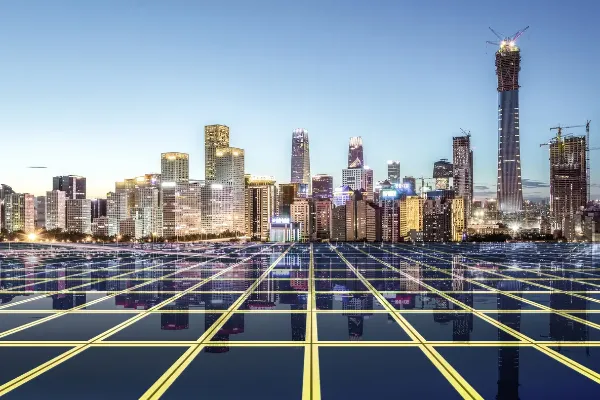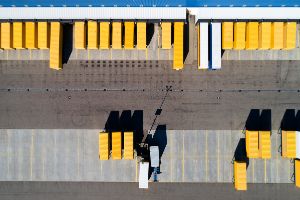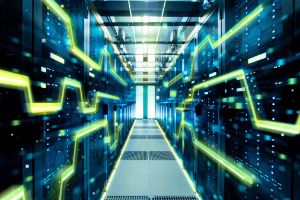What is Artificial Intelligence in the Internet of Things and how is it being used?
The world's most innovative traffic management systems, the most digitised classrooms and the video surveillance systems have something in common: all make use of the artificial intelligence of things (AIoT), one of the most promising fields of technological innovation in the short and medium term.
.jpg)
Table of contents:
It goes unnoticed to some extent, because not much has yet been written about it, but while the artificial intelligence of things (AIoT) is an incipient technology, it is beginning to be used almost everywhere. There are an abundance of examples. From the smart traffic light system that has reduced vehicle traffic by up to 15% in cities as congested as Lagos or Hangzhou to the new generation of autonomous vehicles that incorporate artificial neural networks.
In recent years the progress of the AIoT has made delivery of advanced classes entirely by bots, smart offices with digitised marking, temperature and access control and even 100% automated restaurants and home delivery networks possible. According to Bernard Marr, a technology expert at the US edition of Forbes magazine, "this is a quiet revolution whose effects began to become very apparent in 2019 and that will take a further quantum leap in the next couple of years".
According to Bernard Marr, a technology expert at the US edition of Forbes magazine, "this is a quiet revolution whose effects began to become very apparent in 2019 and that will take a further quantum leap in the next couple of years".
A dense network of intelligent and interconnected objects
Like other representative technologies of the so-called Fourth Industrial Revolution (the era of fully integrated physical, digital and biological resources, as defined by many experts), AIoT found a powerful accelerator in the pandemic. However, as far back as 2018, one of the world's leading technology consultancies, KPMG, published an influential study which concluded that the full integration of artificial intelligence and the Internet of Things is the technological innovation that will have the greatest transformative impact on our societies in the medium and long term. In 2040, again according to the working hypothesis of the study, we will live immersed in the constellation of interconnected intelligent objects.
The decisive qualitative leap in recent years involved providing this network of interconnected devices with advanced artificial intelligence, based on machine learning algorithms.
The equation is simple: it suffices to add artificial intelligence (AI) to the Internet of Things to obtain the artificial intelligence of things. The second of the ingredients in the recipe is a field in which clear progress has been made in recent years. In 2021, the number of devices equipped with connectivity had reached 14.4 billion (five billion more than two years earlier), despite the serious setback caused by the microchip supply crisis. At the current rate of growth, according to Statista estimates, the number of connected objects will total 29.4 billion by 2030, around four for every human being.
This huge estate of things interconnected via the global network is what we know as the Internet of Things. We are talking about objects of all kinds, from the simplest to the most sophisticated. From the wristwatch that manages our email to so-called technological clothing (wearable technology), not to mention the latest generation cold rooms, sensors and digital assistants. All of these devices collect, process and share data, which is generating an unprecedented volume of information, a qualitative leap in terms of Big Data that creates hitherto unprecedented possibilities. The decisive qualitative leap in recent years involved providing this network of interconnected devices with advanced artificial intelligence, based on machine learning algorithms. This has made it possible for them to perform a broad spectrum of sophisticated and complex tasks that require intelligence, or at least something similar to it, without human intervention.
Traffic lights, fleets of autonomous vehicles and video surveillance 4.0
Perhaps the most striking example of the possibilities offered by this technological combination are the mass traffic control systems based on it. The trailblazer is the system that has been in use since 2017 in Hangzhou, a Chinese city of ten million residents which sees close to half a million vehicles circulate through its central districts daily. To streamline road traffic in this megalopolis, the Singapore-based cloud computing company designed ET City Brain, the most comprehensive and ambitious of its AIoT applications.
The platform makes combined use of big data and artificial neural networks to carry out real-time analysis of information from cameras and radars installed throughout the city. Its use has allowed for a 92% increase in the accuracy of congestion and incident detection processes. The system now works semi-autonomously, with supervision and precise intervention from its human supervisors. It dynamically determines the speed limits and traffic light intervals in each section, coordinates the response in the event of an accident and has obtained such impressive results as reducing traffic density by 15%, resolving the city's endemic parking problem and cutting the average time taken for an ambulance to reach its destination from more than 11 minutes to less than seven.
The key to its proper functioning is that it handles global, contextualised and real-time information from the entire system, which is why it can make such complex decisions with such profound implications as, for example, promptly reducing the speed limit at a specific point to reduce traffic congestion in an area located several kilometres away.
.webp)
Given its remarkable features, ET City Brain has been tailored to other scenarios and exported to 31 Asian cities and major African urban centres such as Lagos, the capital of Nigeria. At the Apsara 2021 technology conference, held in Hangzhou, Alibaba Cloud finalised its plans for the development and gradual improvement of the platform, which include new features related to infrastructure management, medical services and cultural and entertainment offerings in the context of a global smart city strategy.
According to Kacper Kubara, a member of the artificial intelligence research team at the University of Amsterdam, Alibaba Cloud's traffic system remains "a leading-edge product that has achieved amazing results", but it is certainly not unique. Since 2020, there have been experiments with using interconnected smart drones to regulate traffic. Canada is one of the countries making the most progress in the introduction of fleets of unmanned aerial vehicles (UAVs). They have been introduced, experimentally and for a limited period, in medium-sized cities in provinces such as New Brunswick. Kubara also highlights the use of AIoT in commercial areas such as so-called smart shops: "The most advanced are already making use of facial recognition systems that take into account, for example, the age of customers who enter the store to adapt their dynamic advertising panels to the most common consumption patterns in their demographic group".
Facial recognition, perimeter control
Another application for the artificial intelligence of things is "the controversial classroom monitoring system that is being used in the schools of several Chinese cities." The cameras "scan the classrooms every 30 seconds to collect visual information, and the algorithm that the system incorporates is capable of recognising both whether behaviour is appropriate and the facial expression of emotions and state of mind (boredom, interest, happiness, sadness …)".
Finally, Kubara also finds significant "the new autonomous piloting systems being developed by companies like Tesla, which have produced vehicles equipped with, in addition to sensors and radars, complex neural network architecture that allows them not only to complete long journeys predetermined by GPS, but also to make all kinds of decisions on the road, including, of course, those related to guaranteeing the safety of other vehicles and people". Bernard Marr adds to this impressive catalogue of practical applications for the AIoT, "autonomous parcel distribution networks at kilometre zero and the new fleets of automated service vehicles".

The field of private security deserves a special mention. Asia is the undisputed leader in this field thanks to the commercial adaptations of cutting-edge security systems adopted by smart cities such as Taipei. The company that sets trends worldwide is Milesight, a multinational with headquarters in the People's Republic of China, the United States, Taiwan and South Korea. It was founded in 2011 and has a presence in 120 countries.
Milesight is one of the most innovative manufacturers of IP cameras, Network Video (NV) recording devices and IT security solutions. Since 2020, the company has focused its growth strategy on its 5G AIoT systems, which include panoramic, PTZ, bullet and dome cameras, but, above all, ensure highly advanced video analysis, movement detection, biometric recognition and perimeter control features, making them an ideal device for integration into hybrid surveillance strategies. According to Anna Flockett, editor of the UK publication Startups Magazine, "security is undoubtedly one of the fields in which the artificial intelligence of things will most decisively demonstrate its disruptive potential in the coming years".
-
Zero Trust: redefining security in the digital age
April 24, 2024
-
Demand grows for smart home protection
April 16, 2024
%20r.jpg)
.8057962467967301760.jpg)



%20(2).jpg)